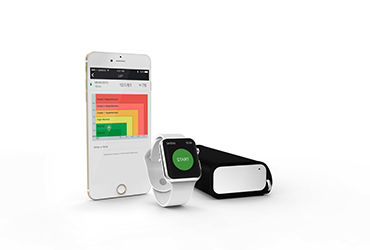Stroke is a life-threatening medical condition that can happen to anyone at any time. Each year nearly 800,000 people in the United States experience a stroke. Time is of the essence when it comes to treating this condition. Read all about the definition, causes, and different types of strokes here.
What is the definition of a stroke?
The condition, sometimes called a “brain attack,” is when blood flow to an area of the brain is cut off. The brain cells deprived of oxygen and glucose die, which can lead to permanent brain damage.
What are the symptoms of stroke?
The lack of oxygen to the brain causes paralysis of the facial muscles, drooping eye or mouth, difficulty speaking, weakness, and numbness of muscles. Remember the word FAST, because acting fast is life-saving, to look for symptoms.
Face – a common symptom is a partial paralysis of the facial muscles, usually on one side. A person experiencing the condition might not be able to smile, talk, or their mouth or eye may droop.
Arm – It may cause weakness or numbness of muscles so a person with a suspected stroke may not be able to lift both arms and keep them high.
Speech – a person may not be able to talk, or their speech may be garbled or slurred despite trying to communicate.
Time – the faster a patient can get help the better are the chances of successful recovery. Call the emergency line and communicate immediately if you suspect someone is experiencing a stroke.
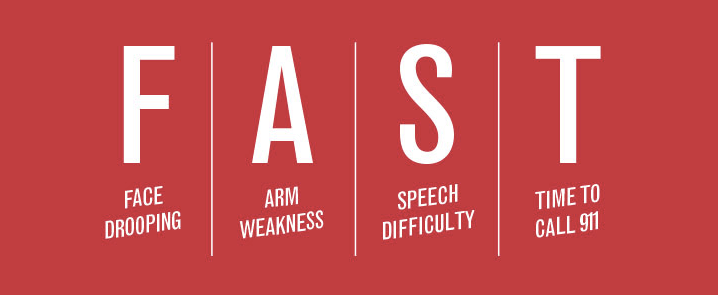
What causes a stroke?
Lack of blood supply to the brain. When blood flow to the brain stops, the brain cells are deprived of oxygen and begin to die. This can happen when a blood vessel bursts or leaks and no longer can deliver the blood supply to a part of the brain.
What are the different types of strokes?
This depends on the type of stroke the patient is having. There are three different types: ischemic, TIA (transient ischemic attack) and hemorrhagic.
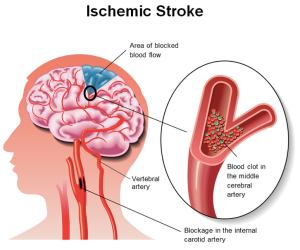 Ischemic stroke
Ischemic stroke
Ischemic stroke occurs when the arteries to the brain become blocked or narrowed, causing severely reduced blood flow. There are two types: thrombotic and embolic. Thrombotic occurs if a blood clot forms in one of the arteries that supply blood to the brain. An embolic occurs when a blood clot forms away from the brain, sometimes in the heart, and is carried through the bloodstream until it is lodged in narrower brain arteries.
Mini stroke
TIA (transient ischemic attack), also known as a mini-stroke, is a temporary blockage of the blood supply to the brain. TIA is a serious warning sign and should not be ignored. If someone has experienced a TIA, there is likely a narrowed or partially blocked artery leading to their brain, or a clot source in their heart.
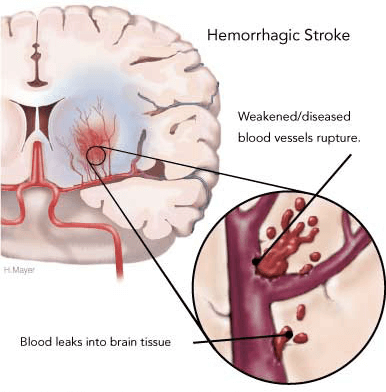 Hemorrhagic stroke
Hemorrhagic stroke
Hemorrhagic stroke occurs when a blood vessel in the brain ruptures. This can be caused by uncontrolled high blood pressure or weak spots in the blood vessel wall.
How is a stroke detected and diagnosed?
Based on signs and symptoms, a physical exam, test results, and medical history. The doctor will usually ask the patient’s family member what symptoms the patient has been having and when they began. The doctor will also check mental alertness, coordination, and check for numbness in limbs. Next, the patient will undergo a few tests, such as blood tests, a CT scan, an MRI, or an ECG/EKG test. These tests will let the doctor know whether there is unusual activity in a patient’s blood vessels, brain, or heart.
What is the treatment for a stroke?
Treatment depends on what type the patient is having. To treat an ischemic stroke, doctors must restore blood flow to the brain. This may be done with medication, such as aspirin, or emergency surgical procedures, such as mechanical clot removal — either way, the sooner, the better. Being treated as quickly as possible increases the patient’s chances of survival and reduces complications.
To treat a hemorrhagic stroke, doctors must control the patient’s bleeding and reduce pressure in their brain. If the patient takes blood thinners (anticoagulants), then he or she may be given drugs or a blood transfusion to counteract the blood thinners’ effect. The patient may also be given medication to lower the pressure in his or her brain. If treatment with medication is not enough, then the doctor may perform surgery to repair blood vessel abnormalities associated with hemorrhagic strokes.
Who is at risk of having a stroke?
There are medical and lifestyle risk factors that can increase people’s chances of having a stroke. Lifestyle risk factors include binge drinking, physical inactivity, being overweight, and the use of drugs such as cocaine and methamphetamines. Medical risks include high cholesterol, diabetes, cardiovascular disease, cigarette smoking, and high blood pressure. If a patient’s blood pressure reading is higher than 120/80 mmHg, then their risk increases significantly. Because high blood pressure is the most common trigger, it is important to monitor blood pressure frequently. QardioArm smart blood pressure monitor makes measuring BP comfortable and convenient. You can create your blood pressure journal on your smartphone or tablet, view charts and look for changes and trends.
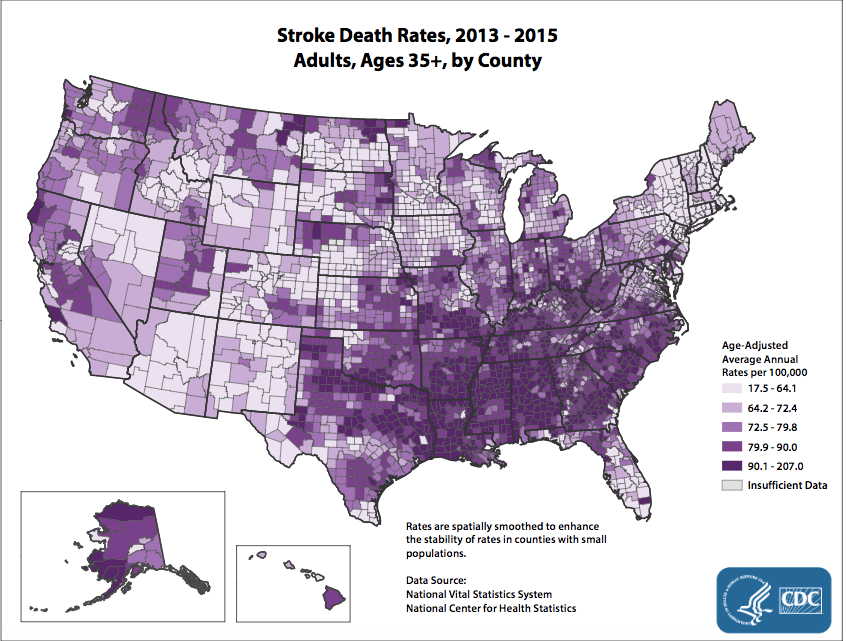
Is there medication for stroke?
There are many different medications to treat and prevent stroke. For example, anticoagulants may be prescribed to reduce the risk of blood clots and prevent existing blood clots from getting any bigger. Antiplatelets prevent blood cells from sticking together, while neurotoxins interact with proteins in nerves to relax muscles. The type of medication prescribed to the patient will depend on the type of stroke they have suffered.
How to recover from a stroke?
Every person’s recovery is different depending on the type and the amount of damage caused. The impact depends on which area of the brain is involved. Movement and sensations on specific sides of the patient’s body may be affected, as well as problems with breathing, swallowing, balancing and vision. The patient’s rehabilitation treatment may include a dietician, physical therapist, speech therapist, psychologist, or a rehabilitation doctor.
Can the effects of a stroke be reversed?
The damage caused depends on how quickly a person is treated. If the person receives drugs or undergo surgery fast enough, then it is likely that they will recover. Medical advances have significantly improved survival rates and recovery over the last few years. Chances of survival and recovery are best if the stroke is treated immediately.
How to prevent a stroke?
Age and family history makes people more susceptible to having a stroke. However, there are many risk factors that people can control. Exercising, quitting smoking, and cutting back on salt are all ways to reduce the risk of experiencing this condition.
Monitoring blood pressure, and if it is elevated, treating it is another great way to reduce the risk of stroke. If you have high blood pressure or suffer an arrhythmia such as atrial fibrillation, then monitoring your blood pressure on a daily basis is key. QardioArm allows you to track your blood pressure, set reminders, and even send your results to your doctor, all from your smartphone or tablet. The sleek and compact design makes it easy to bring this stylish BP monitor with you on the go. If you have high blood pressure, then be sure to check out QardioArm, it could save your life.
Post contributed by Natalie Cassidy.
Sources:
Mayo Clinic
Harvard Medical School
American Stroke Association
National Stroke Association 1
National Stroke Association 2
National Heart, Lung and Blood Institute
Centers for Disease Control and Prevention 1
Centers for Disease Control and Prevention 2


